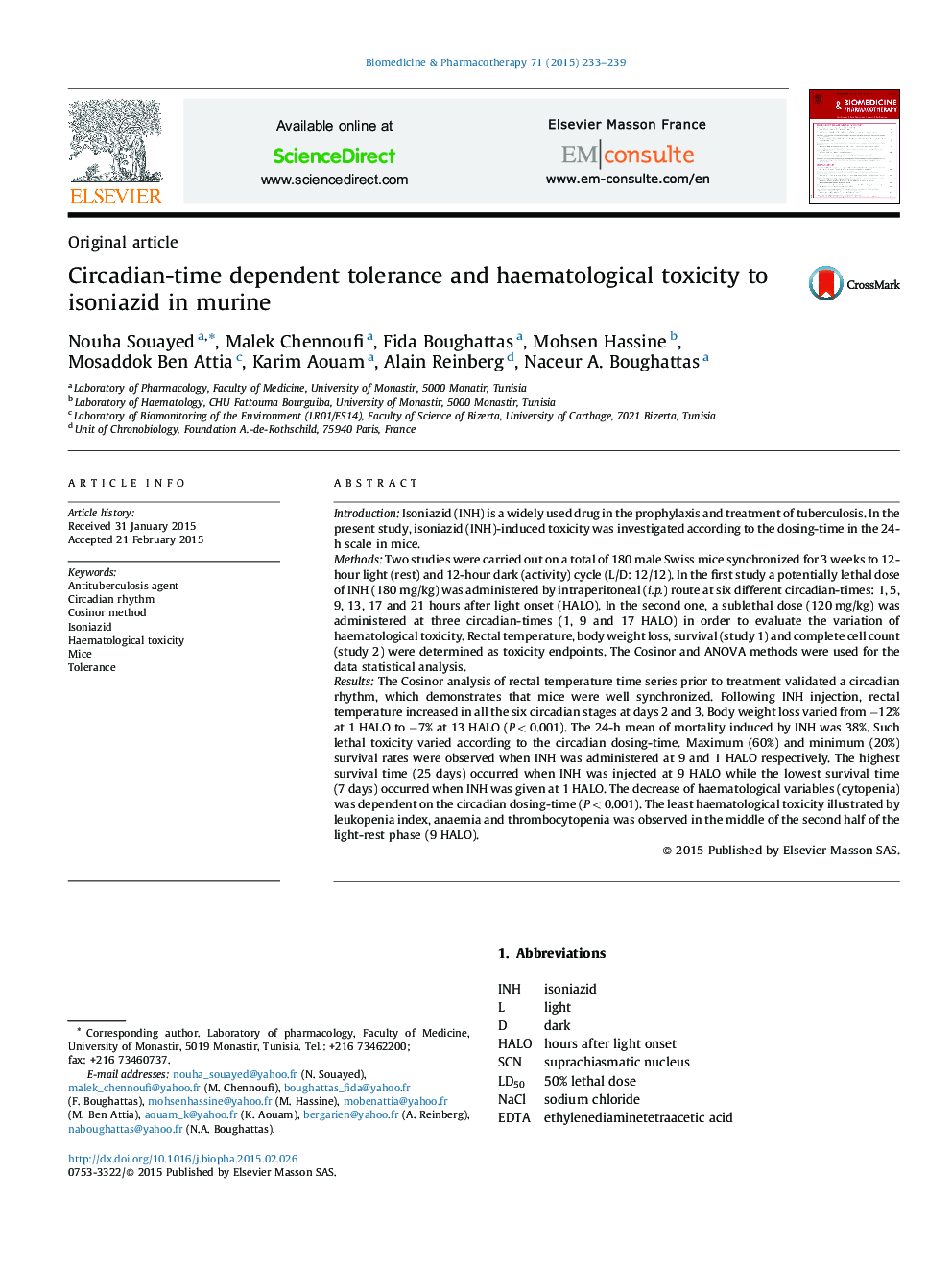| کد مقاله | کد نشریه | سال انتشار | مقاله انگلیسی | نسخه تمام متن |
|---|---|---|---|---|
| 2524100 | 1557971 | 2015 | 7 صفحه PDF | دانلود رایگان |
IntroductionIsoniazid (INH) is a widely used drug in the prophylaxis and treatment of tuberculosis. In the present study, isoniazid (INH)-induced toxicity was investigated according to the dosing-time in the 24-h scale in mice.MethodsTwo studies were carried out on a total of 180 male Swiss mice synchronized for 3 weeks to 12-hour light (rest) and 12-hour dark (activity) cycle (L/D: 12/12). In the first study a potentially lethal dose of INH (180 mg/kg) was administered by intraperitoneal (i.p.) route at six different circadian-times: 1, 5, 9, 13, 17 and 21 hours after light onset (HALO). In the second one, a sublethal dose (120 mg/kg) was administered at three circadian-times (1, 9 and 17 HALO) in order to evaluate the variation of haematological toxicity. Rectal temperature, body weight loss, survival (study 1) and complete cell count (study 2) were determined as toxicity endpoints. The Cosinor and ANOVA methods were used for the data statistical analysis.ResultsThe Cosinor analysis of rectal temperature time series prior to treatment validated a circadian rhythm, which demonstrates that mice were well synchronized. Following INH injection, rectal temperature increased in all the six circadian stages at days 2 and 3. Body weight loss varied from −12% at 1 HALO to −7% at 13 HALO (P < 0.001). The 24-h mean of mortality induced by INH was 38%. Such lethal toxicity varied according to the circadian dosing-time. Maximum (60%) and minimum (20%) survival rates were observed when INH was administered at 9 and 1 HALO respectively. The highest survival time (25 days) occurred when INH was injected at 9 HALO while the lowest survival time (7 days) occurred when INH was given at 1 HALO. The decrease of haematological variables (cytopenia) was dependent on the circadian dosing-time (P < 0.001). The least haematological toxicity illustrated by leukopenia index, anaemia and thrombocytopenia was observed in the middle of the second half of the light-rest phase (9 HALO).
Journal: Biomedicine & Pharmacotherapy - Volume 71, April 2015, Pages 233–239
